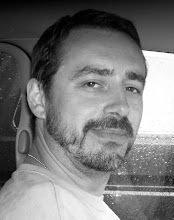 The great British SF/fantasy writer Nigel Kneale wrote the nicely-layered screenplay for the made-for-TV ghost story The Woman in Black (1989), based on a novel by Susan Hill. The film is shot largely in the English countryside, revealing the indefinable but tangible alchemy of great locations, something digital realms can not duplicate.
The great British SF/fantasy writer Nigel Kneale wrote the nicely-layered screenplay for the made-for-TV ghost story The Woman in Black (1989), based on a novel by Susan Hill. The film is shot largely in the English countryside, revealing the indefinable but tangible alchemy of great locations, something digital realms can not duplicate.The location shooting adds an appropriately haunting atmosphere to a tale that is reminiscent of the marvelous literary supernatural writings of M.R. James (if you are unfamiliar with James' work, I advise that you immediately fill this gaping hole in your life by purchasing Ghost Stories or another of the various collections of his classic short stories). James took the prim and proper facade of English life and quietly, subtly injected the uncanny, and The Woman in Black does a creditable job of capturing James' style, right down to the inclusion of a flat-out bone-chilling scare scene that has all the more impact because of the careful build-up that came before.
The story involves solicitor Arthur Kripps (Adrian Rawlins), sent to the small English coastal town of Crythin Gifford to tidy up the effects of recently-deceased Alice Drablow, who lived in a solitary house surrounded by a marsh and cut off from the mainland at high tide. Kripps sees the titular woman in black at Mrs. Drablow's funeral, a spectre that according to local tradition fortells the death of a child. Kripps spends time at the deserted house, sorting through the dead woman's papers, and begins to learn more about the black-clad woman and the past events that surround her.
If, like me, you devour classic ghost stories, then many of the narrative elements will be familiar, including a locked room, furtive locals with buried secrets, mist, graveyards, and a particularly nasty spectre. The 'woman in black' of the title only appears a handful of times, but each visitation is memorably spooky, and the ghost itself leaves a chill that haunts the film even when its off-screen because of its apparent malevolence and determination to do ill-will.
Unfortunately out of print on Region 1 DVD and VHS, with some copies still available on eBay, The Woman in Black is a simple but effective ghost story, and is well worth the effort to seek out.
---
Directed by Herbert Wise
Written by Nigel Kneale, based on the book by Susan Hill
Starring:
Adrian Rawlins...Arthur Kripps
Bernard Hepton...Sam Toovey
David Daker...Josiah Freston
Pauline Moran...Woman in Black



